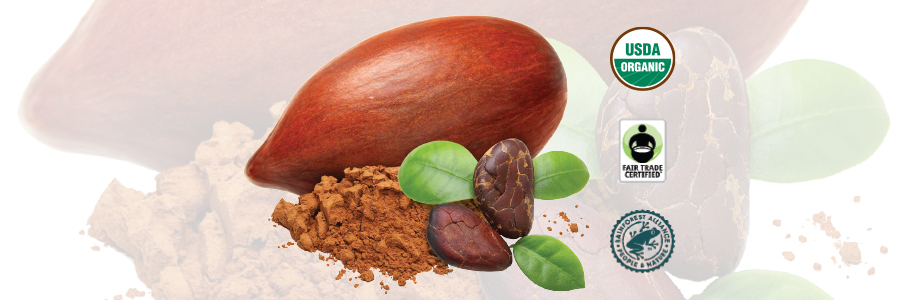


Sign-up for {N}power to get exclusive discounts, newsletters, members-only features, and more!

Cocoa or cacao? And does it matter if it ends in chocolate? Actually, the journey those cocoa beans took before they were transformed into your favorite treat does matter—a lot!

Let's start at the beginning of the cocoa bean's journey with three of its most significant challenges: child labor, deforestation, and poverty.1 Around 70 percent of cocoa worldwide comes from West Africa, with Côte d'Ivoire and Ghana yielding the lion's share.2 Yet, an unfathomable chasm exists between the less-than-a-dollar per day earned by most West African cocoa farmers and the over 100-billion-dollar annual value of the chocolate industry.3 4 Within this abyss, 1.5 million children are toiling on cocoa farms, with at least 43 percent of them involved in the most hazardous activities.5 Simultaneously, deforestation in Ghana and Côte d'Ivoire is rapidly accelerating—in 2018, they lost an estimated 60 percent and 26 percent (respectively) of forests compared to 2017.6 And at the root of it all is poverty.
Flavorful Footnotes: Cocoa is packed with potent antioxidant flavonoids, like catechin, epicatechin, and procyanidins. In fact, it has more per serving than most other foods, including green tea and red wine.7 8
Is there an agricultural system that delivers a consistent win for the environment, human health, and farmer profits? Absolutely! It’s rooted in these four principles: health, ecology, fairness, and care, and it’s called organic.9 From improved farmer health and increased revenues in Nigeria, to better yields, higher income, and more social connectedness in Bolivia, the benefits of organic methods are evidenced on cocoa farms worldwide.10 11 And even in the most climate-friendly type of cocoa farming—agroforestry (shade-grown)—organic performs best. A study from Ghana comparing conventional and organic cocoa agroforestry systems found organic had significantly greater above and below-ground biomass (carbon pools), higher soil carbon stocks, more biodiversity, and increased potential for farmers to benefit economically.12 13 14 Which system will you support with your next bar of chocolate?
Flavorful Footnotes: Dark chocolate is a good source of essential minerals like magnesium, potassium, and iron, and it also contains zinc, copper, and selenium. To maximize benefits from a chocolate-y serving of minerals choose 70% cacao or higher.8 15
Although no one claims that third-party certification solves all of chocolate’s pressing problems, it does provide a level of desperately needed supply chain transparency. Each program delivers environmental benefits, resources for farmers, and collaborations intended to advance human rights and improve farming communities' wellbeing.16 17 18 In 2020, both the Rainforest Alliance and Fairtrade International published new standards aimed at better addressing some of cocoa’s key issues, including boosting farmer income, combatting deforestation, and strengthening transparency.19 20 You can leverage your chocolate cravings in favor of a better supply chain when you choose these seals:
Flavorful Footnotes: Cocoa flavonoids support a healthy circulatory system by activating nitric oxide, a compound that helps keep blood vessels relaxed and flexible and inhibits inflammation, lowering the risk of plaque development.21 7 22



Sign-up for {N}power to get exclusive discounts, newsletters, members-only features, and more!